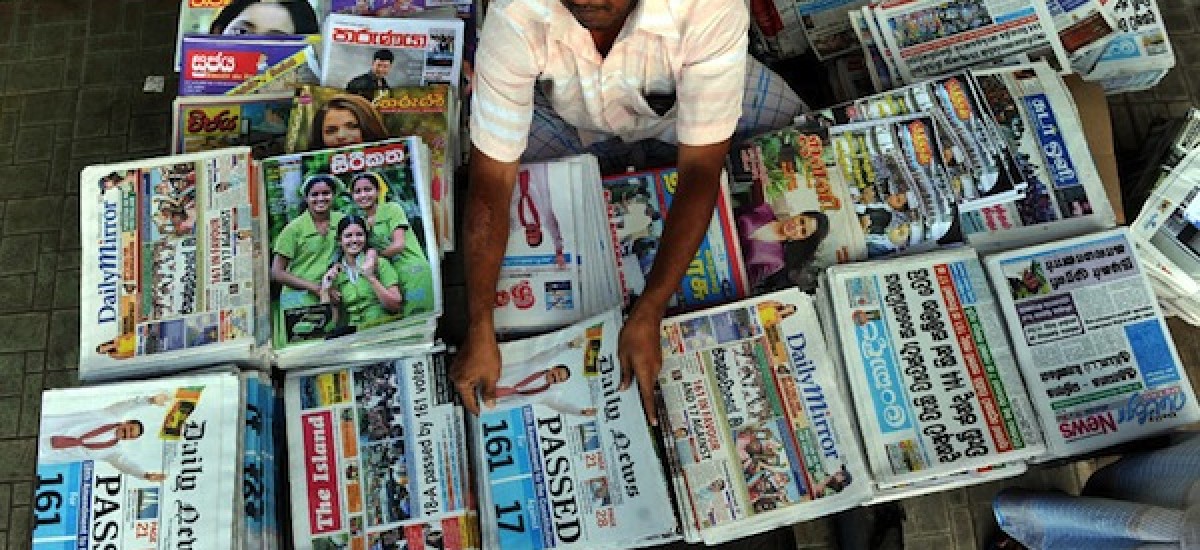Image courtesy Asia Society
This short essay was originally written to mark the first anniversary of Ceylon Today newspaper, where the writer is a Sunday columnist.
I was raised on newspapers – both reading them and creating them. I wanted to be a journalist even before I knew that word. I edited household and high school newspapers before slightly expanding my reach when I turned 21.
In my formative years, I had a foretaste of the challenges of editorial independence. First, when I demanded greater freedoms of movement and higher pocket money from household management (denied). And years later, when I championed some long forgotten cause with the school management (also denied).
On both occasions, I was gently but firmly told that home and school were no democracies: giving in to majority wishes was simply out of the question. I’m still trying to figure out if that cherished principle works at the country level…
It was easy to be a starry-eyed idealist at 15. That’s how old I was when the maverick billionaire Upali Wijewardene launched his national newspapers, back in 1981, revitalising a complacent industry and inspiring a new generation of readers and journalists. That effectively sealed my career choice.
During the past quarter century that I’ve tried to earn an honest living from my wits, I have moved between various media organisations and media types. I’ve flirted heavily with radio, TV and the web. But in my heart, I remain a wordsmith.
Oh, I love blogging and tweeting — partly because I’m my own editor-publisher there — but I still get a ‘kick’ every time I see my writing printed in a newspaper or magazine.
Sri Lanka’s newspaper history dates back to Colombo Journal (1832) which apparently had a short but feisty life before it invoked the ire of the British Raj. Nearly two centuries and hundreds of titles later, the long march of printer’s ink — laced with courage and passion – continues.
How long can this last?
Print journalism’s business models are crumbling in many parts of the world, with decades old publications closing down or going entirely online. This trend is less pronounced in Asia, which industry analysts say is enjoying history’s last newspaper boom. Yet, as I speculated three years ago when talking to a group of press barons, we’ll be lucky to have a decade to prepare for the inevitable…
In the absence of independently audited circulation figures, we have no sense how well – or not – our newspaper publishers are doing. One thing is certain, however: no media is immune to the ruthless Darwinian forces.
In my lifetime, I’ve seen two once formidable Lankan media houses wither and die – Times of Ceylon, and Independent Newspapers. The reasons for their demise were complex, but losing credibility and societal relevance were among them.
Therein lies a lesson for ALL media, old and new: engage your audiences and grow, or stray away to obsolescence. Being large, loud and arrogant is no insurance (remember the dinosaurs). Being kept on life support on public or private money also has limits.
In the coming years, waves of technology, demographics and economics can sweep away some venerable old media along with much of the deadwood that deserves extinction. The adaptive and nimble players who win audience trust will be the ones left to write tomorrow’s first drafts of history.
Will Ceylon Today be among them? Right choices and actions today can increase its resilience in times of uncertainty and turbulence.
See also: Confessions of a Digital Immigrant, by Nalaka Gunawardene, Groundviews, 21 Nov 2009
When not seeking his weekly dose of printer’s ink, Nalaka Gunawardene hangs out at http://nalakagunawardene.com


